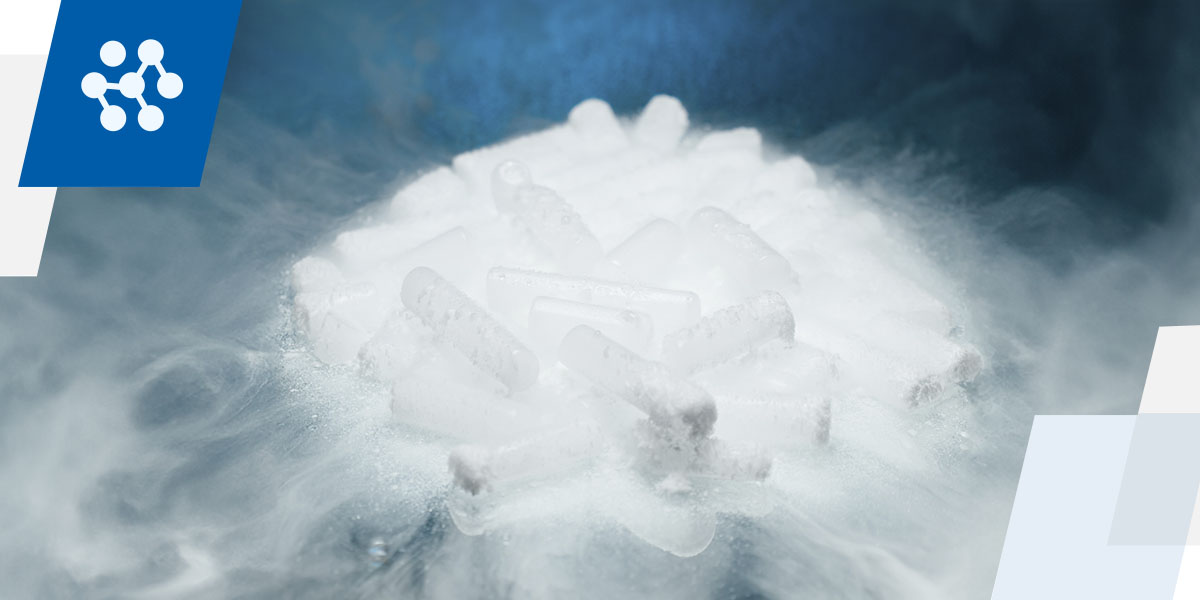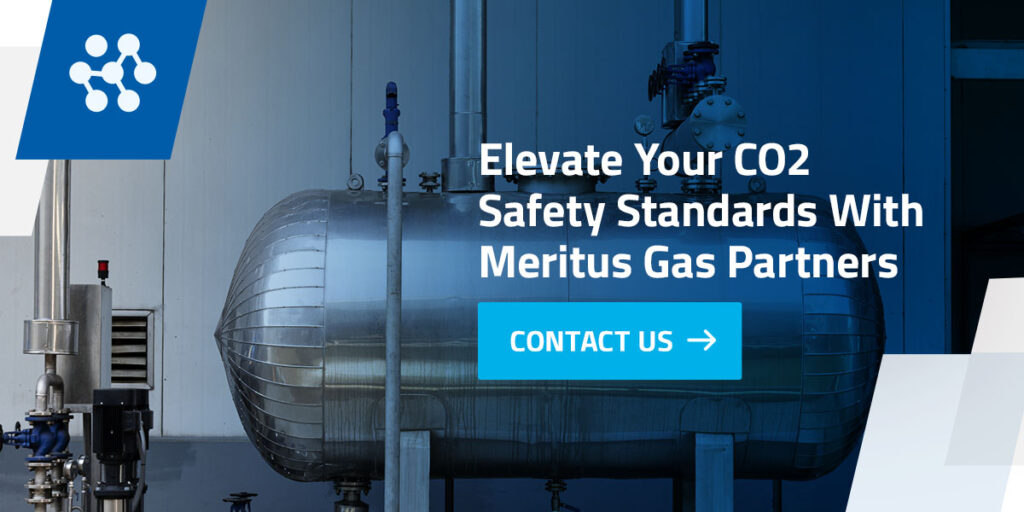

Carbon dioxide (CO2) is an odorless, colorless, non-flammable gas naturally present in the atmosphere at safe levels. However, CO2 can pose a significant health risk when it accumulates in an enclosed space. This can happen when working with dry ice — the solid form of CO2 — or because a CO2 container or pipe leaks in a building with insufficient ventilation.
If you work with CO2, you must be aware of the health risks and how to handle a situation where CO2 levels become too high. This article outlines the symptoms of CO2 exposure, safety regulations, handling guidelines and leak detection tools. We also cover the importance of an emergency response plan and what to do in a CO2 emergency.
CO2 gas is relatively harmless on its own, but prolonged exposure to high concentrations of CO2 gas or contact with dry ice can result in serious health concerns. Understand the following CO2 health risks and overexposure symptoms to stay safe.
The main health risk associated with CO2 gas is asphyxiation. This can happen when there are high concentrations of CO2 in an enclosed space, as the gas will displace the oxygen in the air and make it hard to breathe. Symptoms start with drowsiness, headaches, an increased heart rate, nausea and dizziness. They can progress to difficulty breathing, convulsions, loss of consciousness and death as CO2 levels rise.
Most people will start to see mild CO2 exposure symptoms after a few hours of inhaling air with a CO2 level of 2,000 parts per million (ppm). More severe symptoms occur above 5,000 ppm, and a concentration of 40,000 ppm is immediately dangerous. Moving to an area with clean air will help relieve less severe symptoms.
Handling dry ice and dry ice containers without the correct protection can result in frostbite. Dry ice freezes at -109 degrees Fahrenheit (-78 degrees Celsius), and frostbite occurs at temperatures below 31 degrees Fahrenheit or -0.55 degrees Celsius. With prolonged exposure, dry ice can cause numbness, burning sensations, blistering and tissue death.

Dry ice also sublimates incredibly fast at room temperature, which can cause rapid asphyxiation if there is insufficient ventilation. Dry ice kept in an enclosed container can also explode if the pressure rises too high. An exploding container can cause damage to the surrounding area and injure people nearby.
Paying close attention to and following industry standards for proper CO2 handling is key. The Occupational Safety and Health Administration (OSHA) sets exposure limits for those working with CO2. The OSHA permissible exposure limit for an eight-hour period is 5,000 ppm. The average CO2 level over that period cannot exceed 5,000 ppm. Always consult with local authorities regarding the safety regulations in your area.
Knowing the safety guidelines and precautions for working with CO2 helps increase safety and reduce risk within the workplace. The Compressed Gas Association (CGA) has created specific guidelines for working with dry ice and CO2 gas you can follow to protect yourself and others.

Active CO2 detection techniques are the most effective way to warn of high CO2 accumulations in a confined space. One common piece of active detection equipment is a CO2 alarm. The alarm includes a CO2 sensing probe installed in the confined space and a control unit on the outside. The control unit displays the CO2 level within the space at all times. It uses both audible and visual indicators to warn of high CO2 levels.

Other leak detection tools, including over-run alarms, nitrogen separators and in-line flow meters for beverage gas monitoring, are available. If you currently use the passive leak detection technique of a ball floating inside a flow meter, we recommend you change to another method. This method is ineffective during busy service times.
Businesses that use CO2 in their daily operations should prepare an emergency response plan for dangerous CO2 situations. This plan should include emergency numbers, a map of all CO2 systems in the building and escape routes and meetup points. Teach the plan to all staff working with CO2 and have it accessible in work areas. Staff should also be aware of areas where CO2 could accumulate to toxic levels.
If you suspect you currently have a CO2 leak, identify possible confined spaces that may accumulate high concentrations of CO2 or nitrogen. CO2 collects in low-lying and confined areas, so keg coolers, closets, basements and enclosed rooms are dangerous during a leak. Air out any contaminated areas thoroughly before entry. All staff must immediately evacuate the building at the first signs of a leak.
Do not enter the area if you suspect there is a chance of compressed gas accumulation. If you can, shut off the gas supply that feeds the leak without placing a person at risk of entering a confined space. Contact emergency services if you can’t safely shut off the gas supply to the leak or if you think there is a safety concern.

At Meritus Gas Partners, we understand the importance of CO2 safety as we are a partner of leading industrial carbon dioxide suppliers. Meritus Gas Partners members can offer you industrial-grade, food-grade and beverage-grade CO2 tanks. Each supplier complies with standard safety regulations and has decades of experience helping customers with safety equipment.
All of our distributors have various solutions to help you meet your business’s safety needs. Whether you need a CO2 alarm, gas equipment or PPE, you can head to a Meritus Gas Partner location for assistance. Our partners can advise you on the cost of every leak detection option available and assist with installation if needed.
Contact us today if you have any questions.